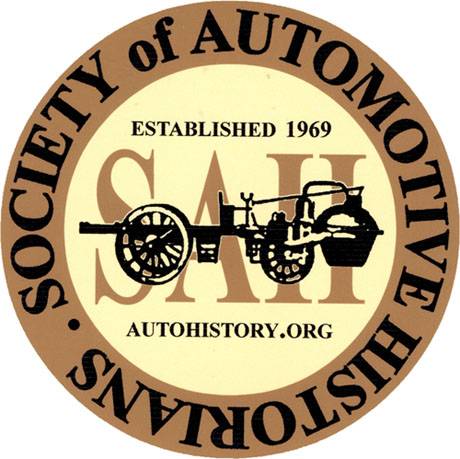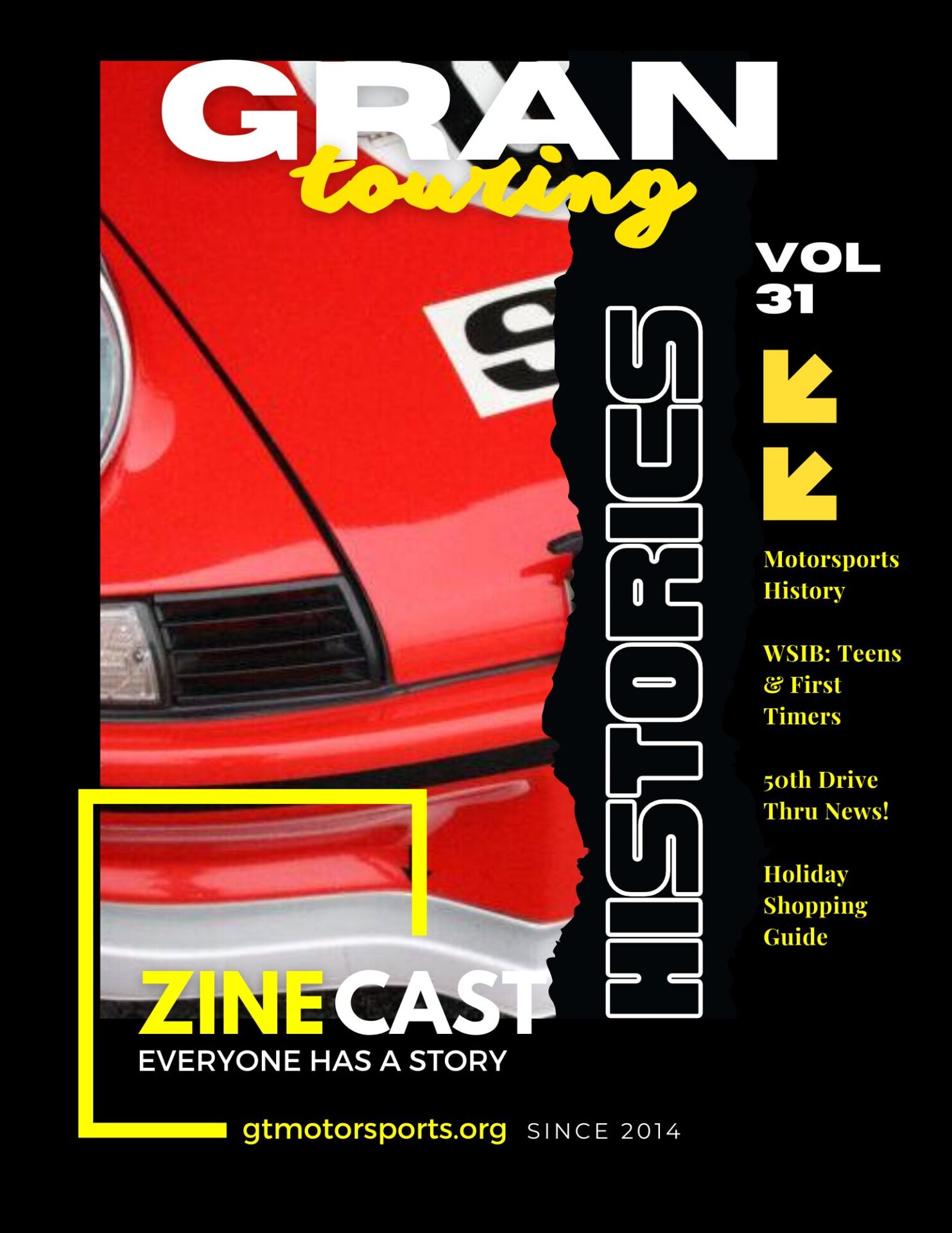Formula One raced at Watkins Glen for 20 years, 1961-1980. This was a still early time in post-war F1, when nearly everything was smaller scale, sponsorship was just beginning, a DIY ethos ruled the paddock and US media attention was limited. Yet these 20 years mark a crucial midway point between the Glen’s original road racing and the modern, corporatized F1 that has now developed into a global media spectacle. To mark 75 years of Watkins Glen motorsports, this presentation offers a sketch of this distinctive time and place, with emphasis on the local community engagement that made those glorious 20 years of F1 possible.
Tune in everywhere you stream, download or listen!
 |  |
- Bio
- Notes
- Transcript
- Livestream
- Learn More
Bio

Dr. James Miller has a longtime interest in media technology, and this led him to the historical study of the automobile as an under-appreciated site of media consumption. From there, the highly digitalized modern race car presented itself as a possible precursor of future mobility. This was also an excuse to intellectualize the pleasure of motorsports, which has resulted in a connection with the IMRRC and membership in the International Motor Press Association. Miller is professor emeritus of communications at Hampshire College, a former member of the graduate faculty at UMass Amherst and a member of the Porsche Club of America.
Notes
Transcript
[00:00:00] Brake Fix’s History of Motorsports series is brought to you in part by the International Motor Racing Research Center, as well as the Society of Automotive Historians, the Watkins Glen Area Chamber of Commerce, and the Argettsinger family.
Formula One at Watkins Glen. The Circus Days by Dr. James Miller. James Miller has had a long time interest in media technology and this led him to the historical study of the automobile as an underappreciated site of media consumption. From there, the highly digitized modern race car presented itself as a possible precursor of future mobility.
This was also an excuse to intellectualize the pleasure of motorsports, which has resulted in a connection with the IMRRC and membership in the International Motor Press Association. Miller is a professor emeritus of communications at Hampshire College, a former member of the graduate faculty at UMass Amherst, and a member of the Porsche Club of America.
Formula One raced at [00:01:00] Watkins Glen for 20 years, from 1961 to 1980. This was a still early time in post war Formula One, when nearly everything was smaller scale, sponsorship was just beginning, a DIY ethos ruled the paddock, and U. S. media attention was limited. Yet these 20 years mark a crucial midway point between the Glen’s original road racing and the modern, corporatized Formula One that has now developed into a global media spectacle.
To mark 75 years of Watkins Glen Motorsports, this presentation offers a sketch of this distinctive time and place with emphasis on the local community engagement that made those glorious 20 years of Formula One possible. Our next presentation is by Professor Jim Miller, and it’s a very much appropriate one.
Formula One at Watkins Glen Circus Days. So, Jim, when you’re ready. Thank you. So, sports car racing on the streets and roads of Watkins Glen took place between 1948 and 1955. It was the realization of a fantastic dream of [00:02:00] Cameron Argettsinger. He’d summered on the nearby family farm and learned to drive on these same streets and roads when he was just 12 years old.
Argettsinger teamed up with the village mayor, a newspaper man, a garage operator, the owner of the Seneca Lodge, and a bunch of other local business leaders, racing they thought would be fun for the Northeastern elite who could afford to do it, and the spectacle would extend the local economic benefits of tourism further into the autumn.
The races were successful beyond expectations, drawing thousands of spectators. The first permanent track was built in 1956 and a second in 1971. In 1961, Formula One came to stay for 20 years. This presentation is part of a larger historical study of Grand Prix auto racing. Last year, I presented a model of F1’s developmental stages with a media orientation and an emphasis on the U.
S. Watkins Glen seemed to me to be a worthwhile case study of what I’m calling the Circus Era. That’ll be my focus today, [00:03:00] although I can only skim the surface of what I’ve learned since last November. Let me begin with three key observations, which will help you appreciate the details that follow. First, the 13 years of racing at Watkins Glen very much prefigured the Formula One experience.
In terms of organization, success, community involvement, sanctioning issues, and financial challenges. My second takeaway is related to the first. F1 at Watkins Glen was a fluke of historical circumstances that came together almost kaleidoscopically. It was at once a logical step in the modernization of Formula One.
A remarkable local achievement in a situation whose apparent strengths were equally the source of its eventual failure, that is, bankruptcy and the loss of the U. S. Grand Prix. A last observation is that there’s no denying the importance of F1 at the Glen. Nearly half of all U. S. GPs attend F1. Watkins Glen hosted the race longer than any other [00:04:00] American venue.
Teams, drivers, the press, fans, all agreed on the special charm and beauty of the place, the warmth and skill of race organizers, and the joyous participation of the villagers. It was unique, and also more generally influential, in what people call the Watkins Glen Effect, meaning, Encouraging other early circuits, like Elkhart Lake, Lime Rock, and perhaps Bridgehampton.
Nor is the past forgotten locally. For 30 years, the village has hosted a one day Grand Prix festival. That’s a kind of reenactment of those long ago times. And the Argett Singer’s family, The gift of the International Motor Racing Research Center collects and preserves precious materials that document the past, available to anyone.
This was a period when F1 began to become something recognizable to our own time. Regular circuits and countries became legacy venues. Familiar teams established themselves. Champion drivers emerged, and there were serious technological advances. The sport also [00:05:00] became more commercial and actually depended on sponsorship, which changed car livery from national colors to corporate and product designs.
While new organizations like the GP Drivers Association and the F1 Constructors Association challenged both the authority of the FIA and the independence of local race organizers. It was also an extremely dangerous time. When nine drivers were killed, two of them here, these fatalities provoked drivers into a sustained program for safety that improved tracks and racecars.
Here’s a schematic representation of the circus era study as it’s coalescing. I won’t be talking about the media component today due to lack of time. My overall aim in this is to move outside the usual motorsport historiography into a more lived cultural context, a kind of arms length ethnography. The most abstract and all encompassing frame here is the carnivalesque.
By this I mean a zone of sanctioned fun, but [00:06:00] crucially, where inversions of the normal take place, where fantasy becomes reality. So, speeding is prohibited, except here, where it’s demanded. Where mythical gods turn into superhuman drivers. Where everyday safety and security are abandoned in favor of embracing danger.
And where celebration, without inhibition, prevails. takes place. Think of the bog. A side note, and there could be many of these, during this period, another related carnivalesque phenomenon, the Outdoor Music Festival, emerged. Holistic leisure, somebody calls it, complete with on site camping, merchandise, food, and all the rest.
In July of 73, there was Summer Jam, featuring the Allman Brothers, the Grateful Dead, the band, and 600, 000 rock fans, and it took place here. Calling this the circus era goes beyond an affectionate metaphor. In fact, the circus and the county fair are predecessor cultural forms to Formula One. They afford ready made structures and cultural [00:07:00] practices that racing took as its own.
Both are mostly rural and small town. Fairs were meant to educate farmers about the latest agricultural techniques, and that required entertainment to get their attention, which looked a lot like circuses, some version of the rings and the midways. Locals collaborated to maintain an annual fair, and they mixed it up with the exotic outsiders that circuses brought to town.
Fairs sought to be community building. Circuses displayed advanced technologies, like electric lighting and travel by train. Fairs involved competition, animal building, and canned fruit. Circuses were mobile encampments, while fairgrounds had permanent buildings. Fairs most popular events were Included horse racing, which gave way to auto racing with circuits and grandstands auto thrill shows were a kind of circus spinoff.
There’s a great deal more to say about how circuses and faires foreshadowed automobile racing and maybe F1 in particular during this period, just not today. Watkins Glen is a rural village whose [00:08:00] population during the circus era was about 2, 500. People descend mainly from English and Irish immigrants and there’s a sizable Italian community.
The area then was mostly agricultural with a significant salt producing industry. Situated at the southern tip of Seneca Lake, Watkins Glen has a long history of tourism. Steamboats and the railroad brought the well to do to elegant hotels and a spa near a two mile long gorge, which at the turn of the 20th century Became a popular New York State Park was and it is pleasant working class town of small businesses and modest homes.
Its biggest neighbors include Ithaca, home of Cornell and Elmira, where there’s a small airport. There is nothing in any of these rather commonplace features, even hints that someday Watkins Glen would become globally synonymous with the pinnacle of international road racing and produce a 75 year heritage of motorsports.
The invention of road racing at Watkins Glen [00:09:00] was a top down affair. It would come to involve the genuine enthusiasm and active support of townspeople, but it was mostly the work of a social elite, men with the experience, education, time, and means to organize, operate, and compete in sports car racing.
There was a core of local founders. They were informed by pre war racing in the U. S. and Europe, and savvy enough to gain sanctioning to close the streets and roads, To stop the trains to attract contestants and all the rest. Drivers were gentlemen sportsmen with serious money, fame, or both. They might have played polo or sailed in regattas.
They attended the dropout of Ivy League schools. They were widely known in popular culture. They had resources for serious play. A modest 1948 MGTC cost twice the price of a basic Ford coupe. Many of them had experienced the Depression in comfort. They all, of course, had survived the war and were looking to live full lives.
Some were heirs and were especially [00:10:00] influential. The Collier brothers grew up on an estate next to the Rockefellers. The boys built a racetrack out of its service roads. In the years just before the stock market crash, teenage Sam built and ran a summer theater featuring vaudeville in movies. It’s seated 66 and was financed by his father.
The patriarch made his money in streetcar and subway advertising and then bought more than a million acres of southwest Florida, where Collier County is named for him. Briggs Cunningham is in a league of his own. His influence on American post war road racing is probably as immeasurable as his personal wealth.
It was Cameron Argettsinger’s dream to race cars through the roads where his family roots were generations deep. His father had gone to Ohio, where he became an officer of a Youngstown steel mill. Father and son drove Packards. At age 20, Cameron was co owner of a Packard dealership. After the war, he was a married father, and between college and law school, he seems to have been able to devote himself [00:11:00] to road racing.
It would not be unkind to call this a vanity project, one whose success was directly linked to Argettsinger’s philanthropy. From the start, he sought to bring Formula One to the Glen. Many teams, as many as 60, circulated through F1 during the circus era. Maybe 15 could be considered significant. What are today called team principles were then some combination of owner manager, fundraiser, and designer.
Colin Chapman was a university trained engineer. A number of these owners were former drivers. Bruce McLaren designed, built, and drove his own cars. Sometimes a mother company manufactured road cars. whose main purpose was to pay for racing. Ferrari and Lotus are examples. These men shared a single minded dedication to the sport.
Frank Williams called it a lifelong compulsion. Ginny Williams wrote this about her husband of nearly 40 years. I’m quite certain he never visualized himself as one of the world’s leading constructors. His motivation was [00:12:00] simply his love of Formula One racing. He was addicted, no lesser word will do, to all aspects of the Grand Prix circus.
He didn’t really mind whether he was on the trapeze or cleaning out the cages, so long as he was there. The owners were idiosyncratic. Williams never ate on race day. He didn’t drink or smoke. He was a serious runner, keeping very fit. His future wife loaned him her inheritance, infuriating her father, who stopped Jenny’s monthly allowance.
Williams barely made his own wedding, and lived his first married year without furniture. There were an eviction and a baby at about the same time. His personal driving was so dangerous, he was called a hooligan. Teams often operated on a shoestring and with a DIY mentality. Enzo Ferrari disdainfully called them garagistas.
It took Williams a good decade before his team found success. He started by buying and selling used race cars and parts. Sharing a London bachelor pad. Creditors circled and [00:13:00] mechanics were paid by barter. Ford would loan the team a van, and Frank would sell it for cash. Drivers avoided his team. Maybe out of pity, Ken Tyrrell loaned an engine.
But Williams made his team feel like a family. People worked for him for ages. And eventually, of course, during the circus era, Williams won 11 races and a driver’s and a constructor’s championship. Things got only better after that. But running a team was hit or miss then, and teams very much reflected their owners quirky, impassioned personalities.
There’s disagreement about who first remarked that F1 drivers are like interchangeable light bulbs. But you see the point. During the circus era, there were a great many drivers who passed through the sport. Teams then didn’t identify, train, and advance them. Careers were short, several years at most. And only a few rose to the glow of celebrity.
Among scores, even hundreds of dimmer bulbs. For most, even those who became stars, a driver’s life was often one of struggle [00:14:00] and danger. Jackie Stewart was three times world champion. Eventually, he ran his own team. He led the successful fight for driver safety. Roman Polanski made a film about him, and George Harrison recorded a single.
He provided TV race commentary, and was a spokesman for Ford and Rolex. The King of Jordan was Stewart’s buddy. Stewart’s calls his F1 experience and the life it engendered a rocket ship ride. That’s because he began as a mechanic in his family’s rural garage. Climbing the ladder he says, I drove whenever, whatever, wherever possible.
For his first Monaco race, To save money, he drove the round trip from Scotland. And while he felt he was up against the sons of rich fathers, he referred to death on the track as akin to an air crash and a medieval battlefield. Today’s drivers, Stewart says, have no understanding at all. of what we experience.
Mechanics are the essential grunts of Formula One. They may be dedicated to their team [00:15:00] and enjoy a winning relationship with a driver, but their anonymous life is hard, with 14, 16, and even 18 hour days not uncommon in the past. Steve Matchett, a Bennington mechanic for eight years during 90s, offers these unromantic recollections.
He recalls wearing bubble wrap on his feet during winter testing in the UK, plus a t shirt, race shirt, sleeveless sweater, heavy knit sweater, duck down body warmer, and wet weather anorak. The long hours, the all nighters, and the hectic workloads that we are sometimes forced to endure are terrible facets of work in F1, and at times, I felt we were little more than slave labor.
The reality is this. Formula One, for all its associated passions, is a job of work, another way of earning a living. The Grand Prix Drivers Association gave Watkins Glen its Best Stage Grand Prix Award in 1965, and 1970, [00:16:00] 1972. Ginny Williams said that Watkins Glen was my favorite place in the world. Jackie Stewart remembered the glorious colors of autumn in the Finger Lakes.
Rural America in the fullest sense, and unlike the other places we’d be traveling to. The team stayed at the Glen Motor Inn. And because of the Canadian and Mexican races, Teams might remain there for three weeks. There was a charity golf tournament for drivers. Drivers fished on the lake. Bruce McLaren waterskied.
Graham Hill said, In Europe, we don’t stay in the same hotels. We meet only at the racetrack. Here, it’s like a party. Well, there were actual parties. Before the race, at the Argettsingers home, where Bill Green screened race movies in the garage. Looking back, Bill Milliken said, The homespun hospitality led to permanent friendships and was never forgotten by drivers or teams.
There was a post race party at the Seneca Lodge, where Francois Severe would play the piano, and James Hunt picked up waitresses. In between, there was a [00:17:00] champagne party for drivers wives and girlfriends. When F1 was finished with the Glen, Rob Walker said, It makes me very sad to have to go. Local people sold parking places in their yards.
Kids sold race tickets to the lines of cars streaming into the track. Church ladies prepared boxed lunches. Concession stands were staffed by locals, and some of that money paid for the annual high school trip to Washington. Ferrari mechanics overheard Italian being spoken in a store, which led them to cooking with the Italian speaking villager in her kitchen.
Before there were proper facilities at the track, dealerships that ordinarily sold Detroit products turned their garages over to the F1 teams, and locals trucked the cars up the hill for the race. Rick Huey’s experience with Tyrrell Racing epitomizes the easy collaboration between the visiting circus and the villagers.
To put it way too briefly, as a teenager, Rick met Ken. This led to Rick’s becoming an invaluable local man Friday. And then for 27 years, at several North American [00:18:00] tracks, Rick worked when he could as a Terrell team member. Try that today. So, what remains to be studied? Well, there is the so called Watkins Glen Effect, a kind of ripple across U.
S. road racing. Local participation was a distinctive feature here. More specific examples would bring this more to life, like names of lodgings and shops that catered to the race crowd, stories about volunteering, memories about F1 cars at places like the Chevy Garage. That sort of thing. But that’s a tough challenge to get that kind of information so many years later.
And some sort of limited comparison with F1 in Europe during this period would demonstrate either how unusual Watkins Glen was or how certain Grand Prix qualities were universal. I would just say that there’s always more to be done.
Thank you, Jim. Some questions for Jim. We talk a lot about the glory days, the glory days at Watkins Glen. What are [00:19:00] ways that you can see us both preserving that heritage, but also adding to it? Well, I suppose there are different ways to come at that. My particular interest here is regarding F1. I have a broader interest in sports car racing.
And of course, NASCAR has been here now for a long time. So there’s still racing going on. The research center, where I’ve spent many hours, Both going through materials and talking with generous people is this living archive full of material, which just speaking for myself in this project, I now feel a responsibility to bring this to life in some way and publish it and see that it’s circulated.
So perhaps people can remember a past. Maybe the larger question is, you know, is there a future for auto racing as we’ve known it? I had this kind of cockamamie model that I presented last year, which suggests that maybe the next chapter in the life of Formula One, at least. Might be a kind of a simulated hyper reality experience where we don’t have to go to a race which actually isn’t taking place anyway.
Now that’s pretty extreme speculation. Those would be my initial responses to your [00:20:00] question. Vintage racing might be another way to help preserve and present historic race cars. Probably heard this, Sam Posey wrote a book, I think it was called The Mudge Pond Express. It’s a little hard to find, but it really describes a lot of the escapades that went on back in the day.
I haven’t read Posey’s book, but I live relatively close to Lime Rock, so the straight there is now named after him, and he lives in Sharon. The vintage racing is actually one of the principal activities during the annual Grand Prix Festival here in September. It’s a good point. It happened a weekend earlier annually at Lime Rock.
I have to say this, and I hope it’s not offensive to anybody, but I think we owe Bernie Eccleston for the decline of Formula One racing here at Watkins Glen, and I really regret that we’re moving to venues like Las Vegas, but money drives the world. Eccleston then was the leader of the Formula One Constructors Association.
He was a Brabham team owner at the [00:21:00] time, I think. His aim was to Get a better deal for the teams, and especially lining his own pockets. My recollection, and others would know this better than I do, is that he in particular put pressure, along with the drivers, on the track for more updated facilities. I think toilets in the paddock might have been one of the issues.
As well as safety. One of the dynamics going on at the time was a kind of general upgrade. It was just too expensive, as I understand it, for Watkins. Now Bill, don’t challenge any of my historical facts. What I’m going to tell you is the biggest rock concert was here. Bigger than Woodstock and bigger than the one that was at Ontario some years later.
I worked here. And so did Rick Huey. Rick was around. Bunch of us others. When it came time for Summer Jam, You couldn’t go nowheres in Watkins Glen. Montour Main Street was parked full of cars and there was cars all over the place in Watkins Glen. The only way you could go down through Montour Falls was down South Street, out and over the roadway to Burdett and all that.
But it was the biggest thing in the world. [00:22:00] And the pickup after that was a lot too of all kinds of things. Cars that would never, never go back where they had came from. And you’d find money on the ground. Food that was unable to be preserved because they didn’t have enough ice. But anyways, Watkins Glen was the biggest one.
Bigger than the other two that I mentioned. Okay, that’s interesting because in July of 72, there was a music festival held at Pocono Raceway. And it was about a quarter of a million people or so showed up, and it was like a Woodstock type of thing. And that’s just when he said that, and it’s like, wait a second, Pocono had one as well.
So it must just be a commercial endeavor for a facility. That takes in lots of people, has a lot of room, can hold campers, and I just wanted to see the construction. Well, those were the days, and these places are natural sites. The organizers here were serious professionals who had done other very successful gatherings.
This got totally out of control, as I understand it. And as in many cases, Woodstock would be the prime example. Many people paid nothing. They just overwhelmed the place. [00:23:00] My sense is that the local people were very upset by this invasion of 600, 000 people. The Pocono event did as well. Roads were blocked.
It was a rainy weekend, so it was mud and a lot of gate crashing. And again, crippling the community because there was such an influx going to the racetrack. Although some of us have a certain age kind of remember those things fondly. We won’t go there. How I’m trying to conceptualize. A historical moment and particularly in this place is convincing to you and whether you have suggestions for ways to fiddle with it Thank you, jim.
That was wonderful. That was a very different look. Thank you
This episode is brought to you in part by the international motor racing research center Its charter is to collect share and preserve the history of motorsports spanning continents eras and race series The center’s collection embodies the speed drama and camaraderie of amateur and professional motor racing throughout the world You The Center welcomes serious researchers and casual fans [00:24:00] alike to share stories of race drivers, race series, and race cars captured on their shelves and walls and brought to life through a regular calendar of public lectures and special events.
To learn more about the Center, visit www. racingarchives. org. This episode is also brought to you by the Society of Automotive Historians. They encourage research into any aspect of automotive history. The SAH actively supports the compilation and preservation of papers. Organizational records, print ephemera, and images to safeguard, as well as to broaden and deepen the understanding of motorized wheeled land transportation through the modern age and into the future.
For more information about the SAH, visit www. autohistory. org.
We hope you enjoyed another awesome episode of Brake Fix Podcast brought to you by Grand Touring Motorsports. If you’d like to be a guest on the show or get involved, be sure to follow us on all social media platforms at GrandTouringMotorsports. [00:25:00] And if you’d like to learn more about the content of this episode, be sure to check out the follow on article at GTMotorsports.
org. We remain a commercial free and no annual fees organization through our sponsors, but also through the generous support of our fans, families, and friends through Patreon. For as little as 2. 50 a month, you can get access to more behind the scenes action, additional Pit Stop minisodes, and other VIP goodies.
As well as keeping our team of creators fed on their strict diet of fig Newtons, gumby bears, and monster. So consider signing up for Patreon today at www. patreon. com forward slash GT motorsports, and remember without you, none of this would be possible.
Livestream
Learn More
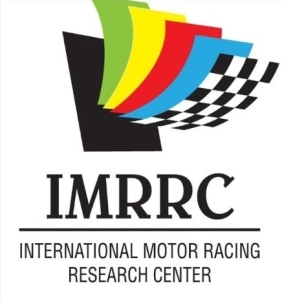 If you enjoyed this History of Motorsports Series episode, please go to Apple Podcasts and leave us a review. That would help us beat the algorithms and help spread the enthusiasm to others. Subscribe to Break/Fix using your favorite Podcast App:
If you enjoyed this History of Motorsports Series episode, please go to Apple Podcasts and leave us a review. That would help us beat the algorithms and help spread the enthusiasm to others. Subscribe to Break/Fix using your favorite Podcast App: |  |  |
Consider becoming a Patreon VIP and get behind the scenes content and schwag from the Motoring Podcast Network
Do you like what you've seen, heard and read? - Don't forget, GTM is fueled by volunteers and remains a no-annual-fee organization, but we still need help to pay to keep the lights on... For as little as $2.50/month you can help us keep the momentum going so we can continue to record, write, edit and broadcast your favorite content. Support GTM today! or make a One Time Donation.
This episode is sponsored in part by: The International Motor Racing Research Center (IMRRC), The Society of Automotive Historians (SAH), The Watkins Glen Area Chamber of Commerce, and the Argetsinger Family – and was recorded in front of a live studio audience.
Other episodes you might enjoy
Michael R. Argetsinger Symposium on International Motor Racing History
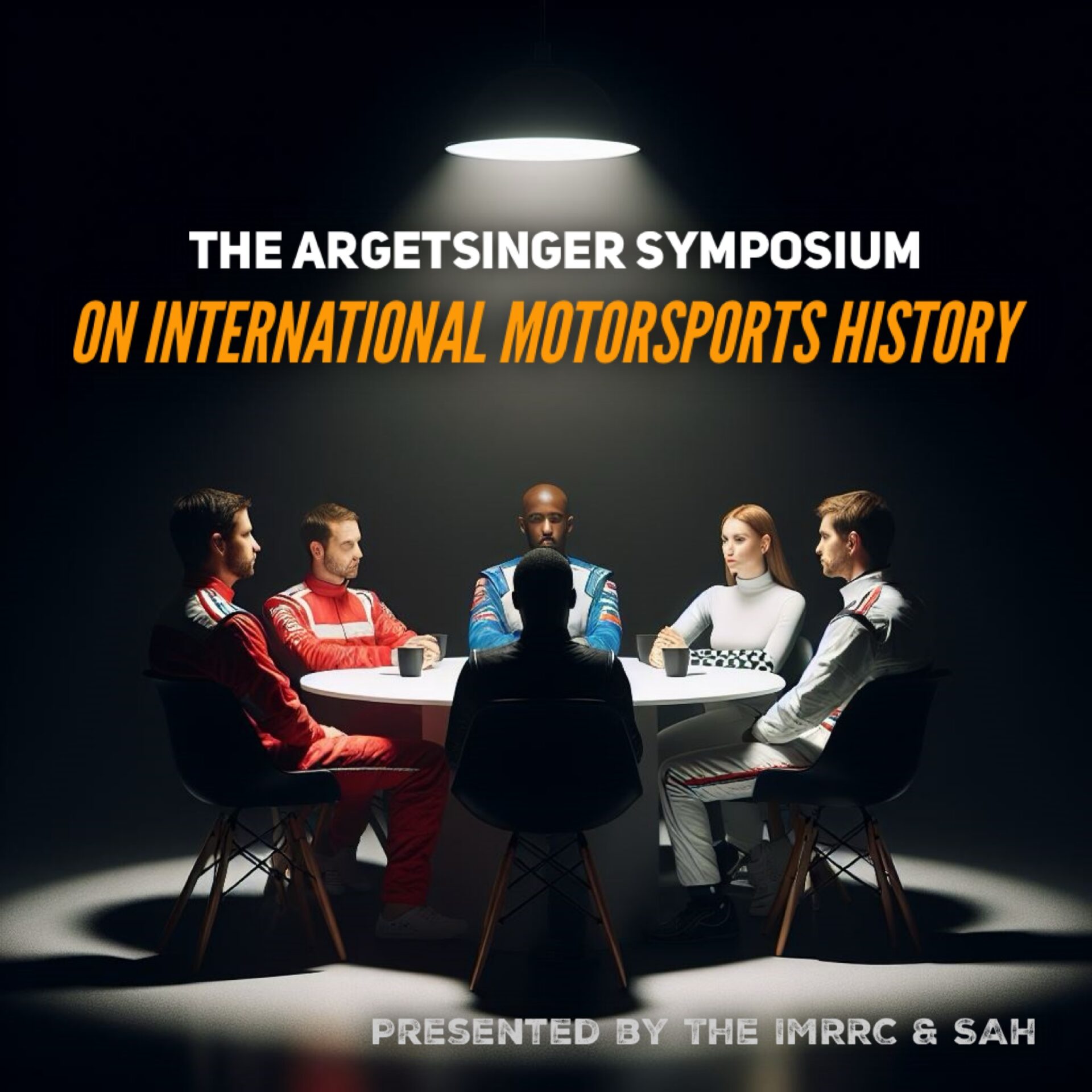 The International Motor Racing Research Center (IMRRC), partnering with the Society of Automotive Historians (SAH), presents the annual Michael R. Argetsinger Symposium on International Motor Racing History. The Symposium established itself as a unique and respected scholarly forum and has gained a growing audience of students and enthusiasts. It provides an opportunity for scholars, researchers and writers to present their work related to the history of automotive competition and the cultural impact of motor racing. Papers are presented by faculty members, graduate students and independent researchers.The history of international automotive competition falls within several realms, all of which are welcomed as topics for presentations, including, but not limited to: sports history, cultural studies, public history, political history, the history of technology, sports geography and gender studies, as well as archival studies.
The International Motor Racing Research Center (IMRRC), partnering with the Society of Automotive Historians (SAH), presents the annual Michael R. Argetsinger Symposium on International Motor Racing History. The Symposium established itself as a unique and respected scholarly forum and has gained a growing audience of students and enthusiasts. It provides an opportunity for scholars, researchers and writers to present their work related to the history of automotive competition and the cultural impact of motor racing. Papers are presented by faculty members, graduate students and independent researchers.The history of international automotive competition falls within several realms, all of which are welcomed as topics for presentations, including, but not limited to: sports history, cultural studies, public history, political history, the history of technology, sports geography and gender studies, as well as archival studies.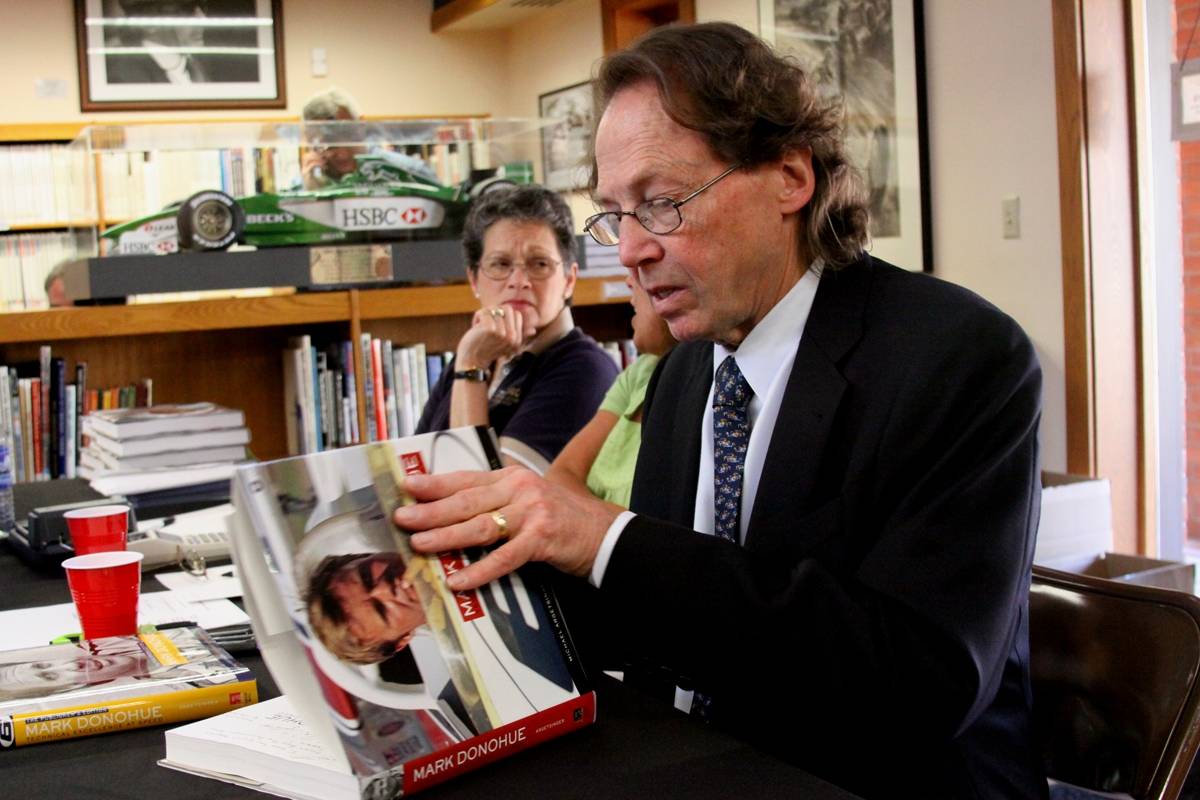 The symposium is named in honor of Michael R. Argetsinger (1944-2015), an award-winning motorsports author and longtime member of the Center's Governing Council. Michael's work on motorsports includes:
The symposium is named in honor of Michael R. Argetsinger (1944-2015), an award-winning motorsports author and longtime member of the Center's Governing Council. Michael's work on motorsports includes:- Walt Hansgen: His Life and the History of Post-war American Road Racing (2006)
- Mark Donohue: Technical Excellence at Speed (2009)
- Formula One at Watkins Glen: 20 Years of the United States Grand Prix, 1961-1980 (2011)
- An American Racer: Bobby Marshman and the Indianapolis 500 (2019)



























